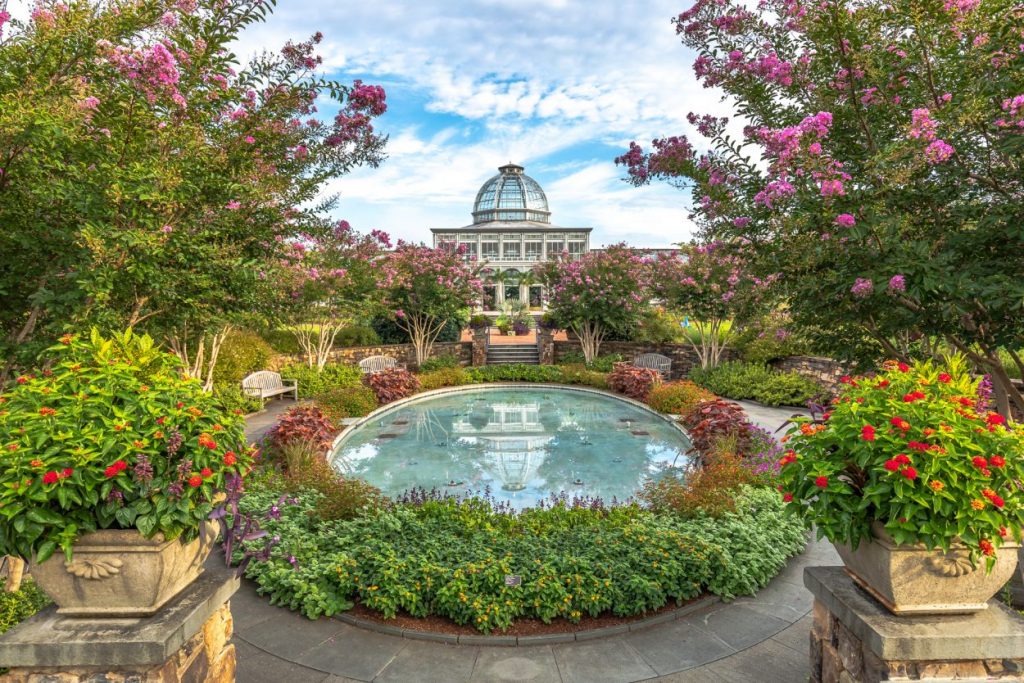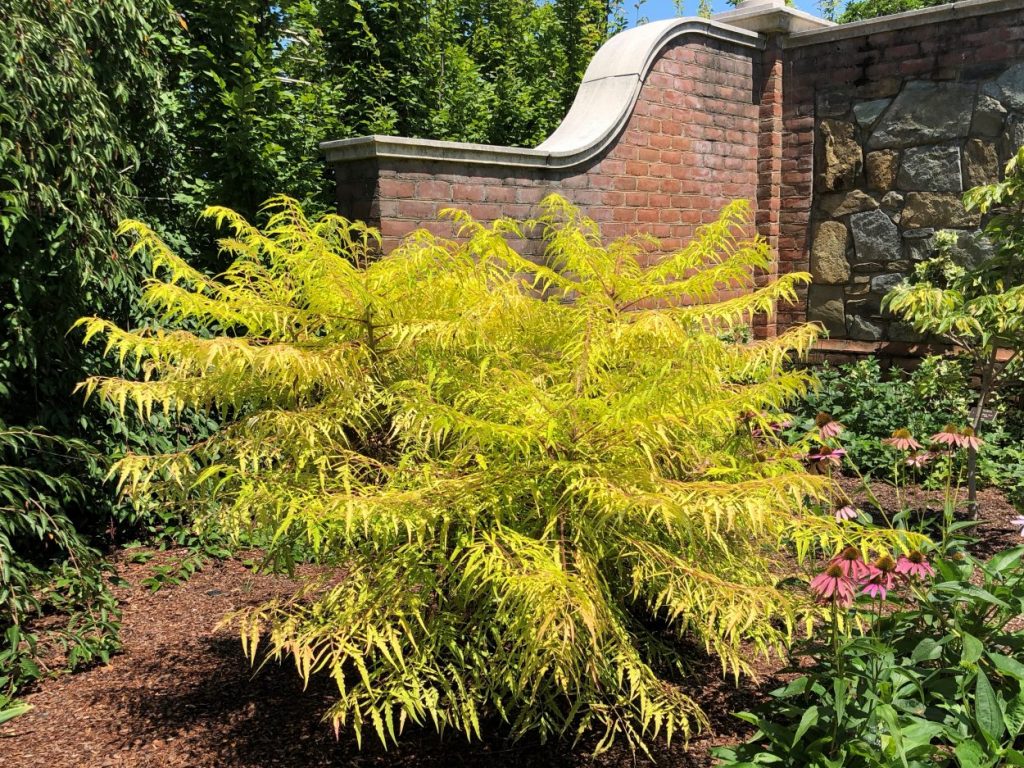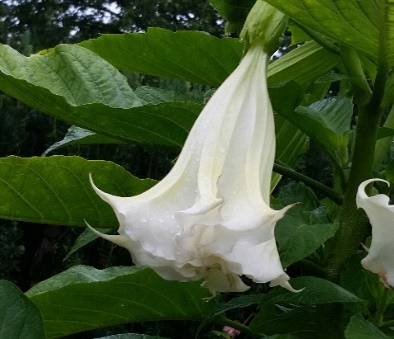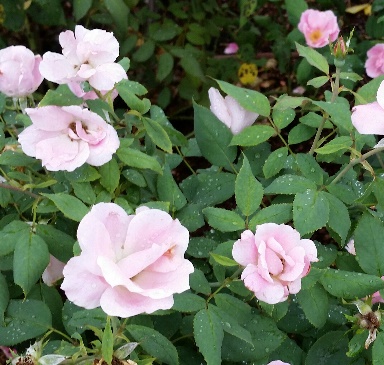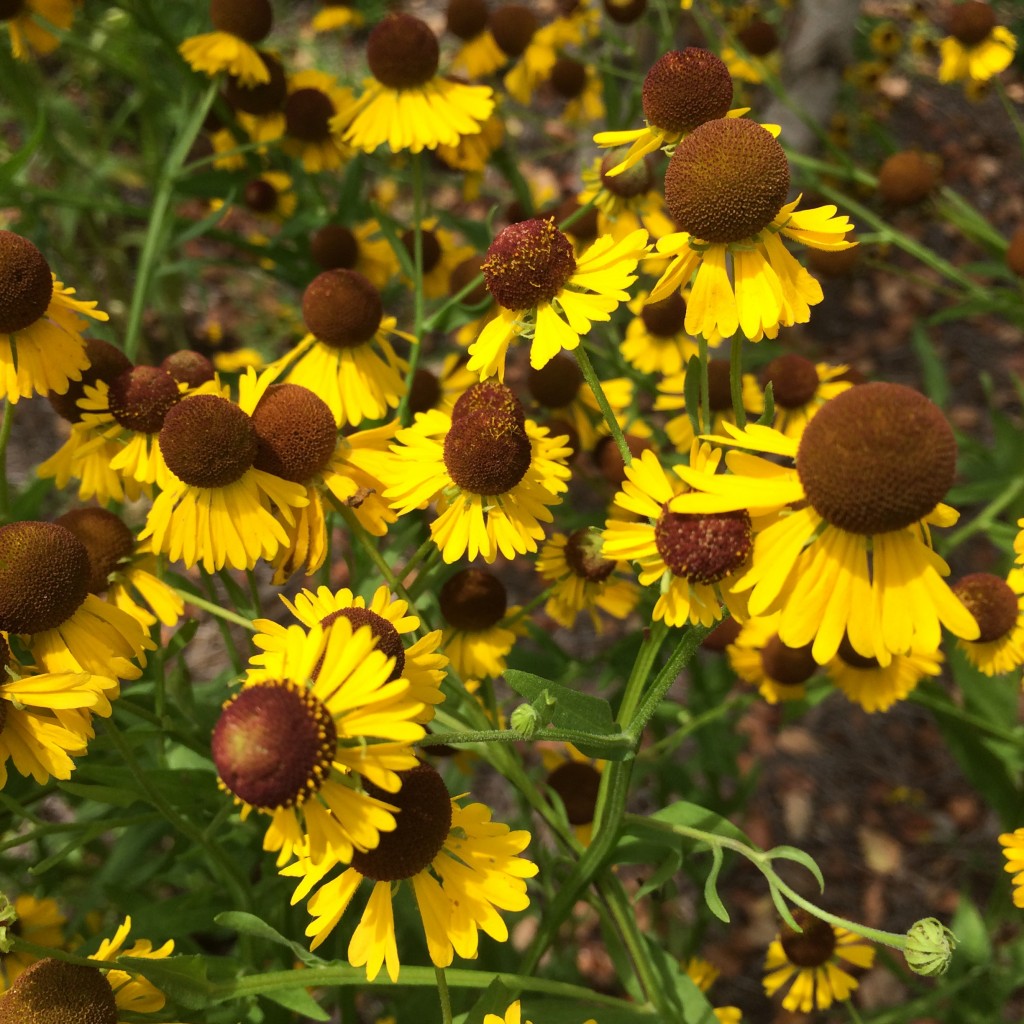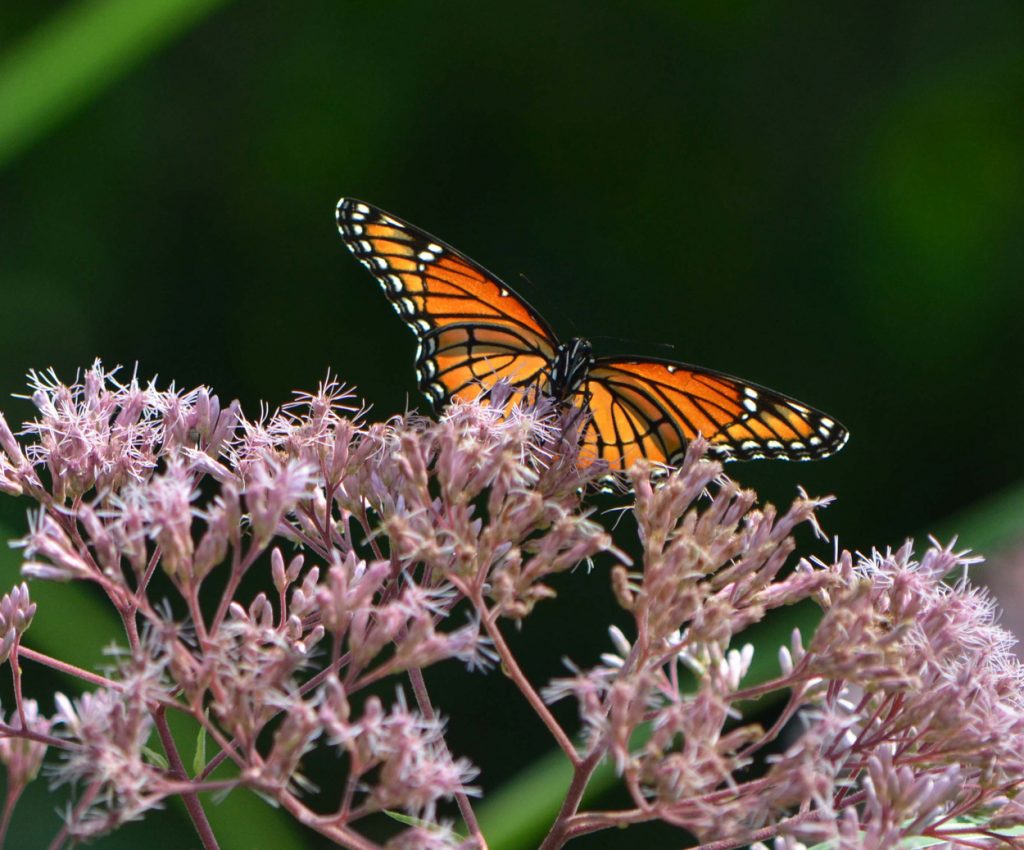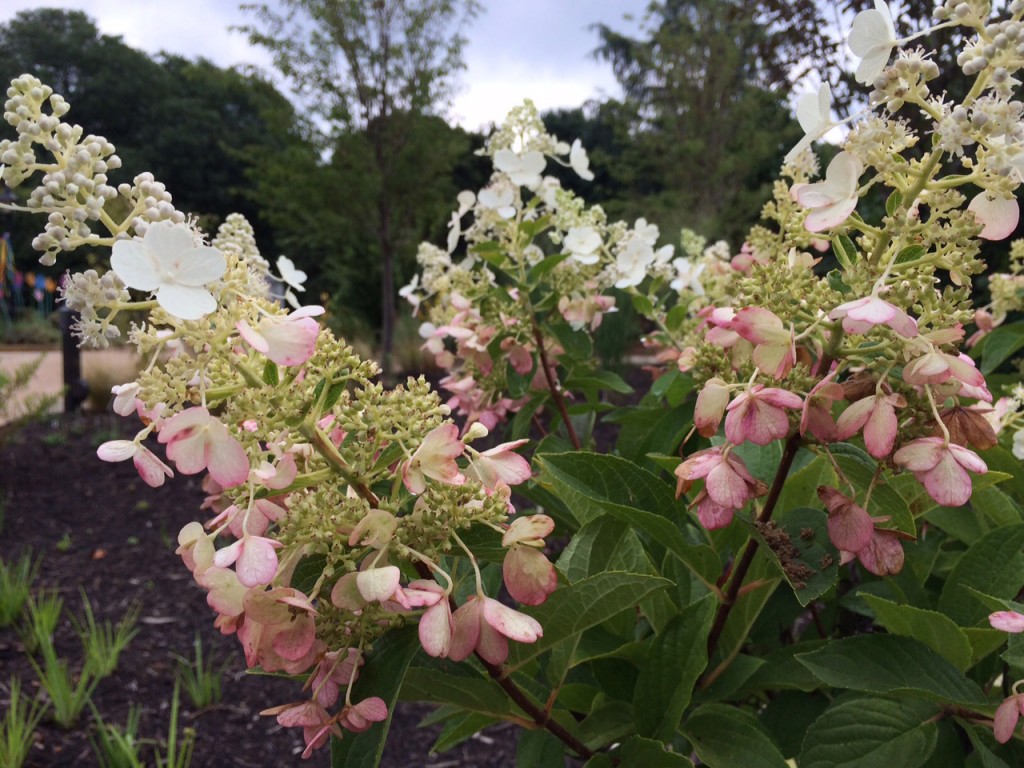Summer Blooms & Bright Spots
We wish we could give each person who visits Lewis Ginter Botanical Garden their own personal guided summer blooms highlights tour. But since that’s not practical we try to do the next best thing — we give visitors you a resource so they can make sure they see our most interesting plants and blooms while visiting. We call this our bloom highlights Bright Spots and every two weeks or so, a team of dedicated volunteers gets together to decide which are our their favorite and most interesting plants. You know, the ones you really don’t want to miss!
We recently revamped Bright Spots to give it a cleaner look. One of the hardest parts, of course, was narrowing our highlights to 10. There is simply so much more to see, and it almost seems as wrong to choose our favorite plants as it is wrong to choose favorite children. One of the best parts about the new look of Bright Spots is that we’ve made space for photos! Since this is the inaugural rebranded issue, we wanted to share it with you. We hope you enjoy it!
Special thanks go to Garden volunteers Maggie Southwick, Susie Austin, and Julia Cothron for contributing to this edition of Bright Spots and to
Group Tour Developer Kate Ruby.
Summer Blooms & Interest
Central Garden
Four Seasons Garden
Elderberry, Eutrochium fistulosum, ‘Lemony Lace’
The feathery foliage is the show stopper, appearing in Spring with red-tinged edges, transitioning as we see it now to a glowing chartreuse and, as Fall approaches, a tint of coral. It produces clusters of white flowers in early spring before the stunning foliage takes pride of place. As a bonus, it should prove deer resistant and is described as cold hardy.
Healing Garden
Angel Trumpet, Brugmansia ‘Snow Fall’ is a plant of dramatic proportions. It is native to the tropical areas of South America, where it can reach 20’. Here in the less-tropical United States, it can be grown into a splendid specimen in pots. The example in the Medicinal Garden has 8-10 foot tall ivory trumpets dangling among the large, deeply veined bright green leaves. These flowers are fragrant in the evening to attract moths, their natural pollinators. Avoid touching the plant, as the sap is less heavenly, and can cause irritation.
Cochrane Rose Garden
Shrub Rose, Rosa ‘Radyod’
This Blushing Knockout Rose is noted for its beautiful single shell-pink flowers growing in clusters above blue-green foliage. Knockouts have excellent resistance to black spot, powdery mildew, and rose rosette. They could also be a nice selection for those who want to grow roses but have less than full sun in the garden.
West Island Garden (and throughout Lewis Ginter)
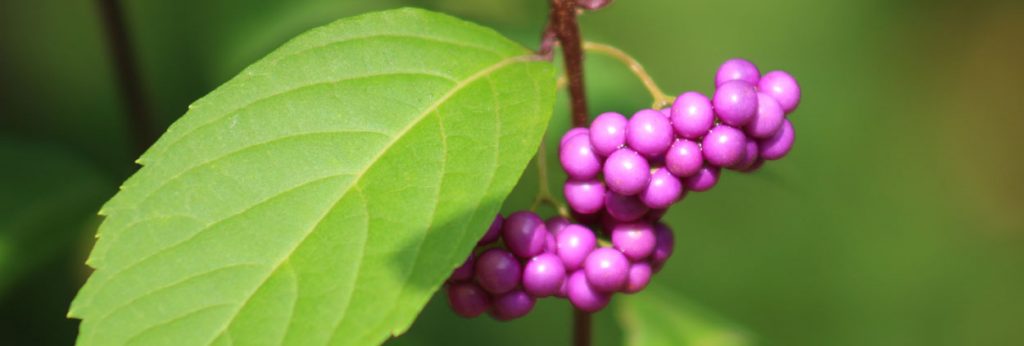
Sneezeweed, Helenium flexuosum ‘Tiny Dancer,’ features small purple-brown spherical cones surrounded by bright yellow reflexed petals. Some say they look like hundreds of yellow skirted dancers in motion. The movement comes from leggy stems that blow easily in the wind. As petals fall, the seed cones are a welcome lunch for our resident songbirds.
Joe Pye Weed, Eupatorium fistulosum
Buds open to clusters of flat mauve flowers on sturdy stems. This native perennial is deer resistant and attracts all sorts of pollinators, especially monarch butterflies, as you can see. Joe Pye Weed likes to keep its feet wet, which makes West Island Garden and the wetlands along Lake Sydnor the perfect place for it. Blooms last until early fall and seed heads provide winter interest in the garden. Joe Pye weed is a native plant.
Flagler Garden, the Woodland Walk, and the Asian Valley
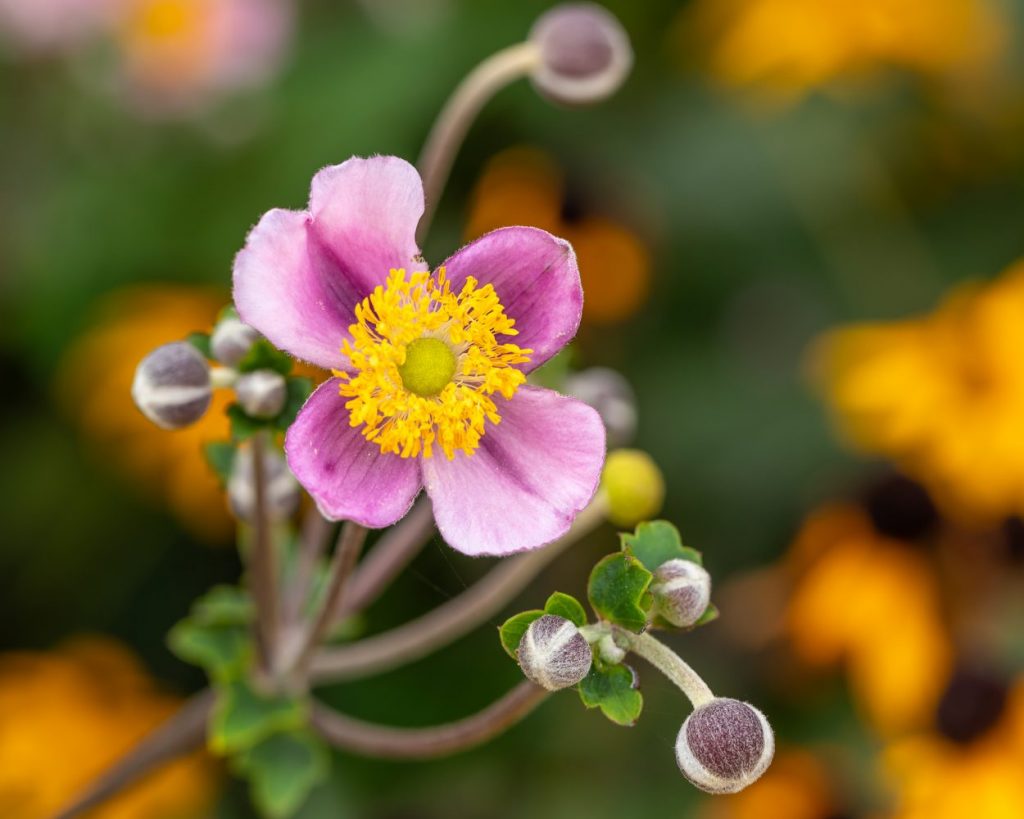
Japanese Windflower or Anemone hupehensis is beautiful both form the front and the back. Image by Tom Hennessy
Japanese Windflower, Anemone hupehensis, has long arching stems and flowers with five pink or lavender petals around a yellow fuzzy center. It’s as popular with pollinators as it is with our visitors. After it blooms, it holds a white seed puff that strongly resembles a small cloud on a stem. Take note: the back of the bloom is just as lovely as the front.
Cherry Tree Walk & Fountain Garden
Panicle Hydrangea, Hydrangea paniculata ‘Dvppink’ PINKY-WINKY is an upright shrub with oval dark green leaves and lime green panicles that turn pink as they age. Flowers at the base of the panicles vary from white to pink. Because Panicle Hydrangeas bloom on new growth, they typically flower normally even if the twigs have been killed back by frost. Want to try one of these in your own yard? Plant it in a sunny, well-drained spot; some early afternoon shade is beneficial.
Summer blooms aren’t all that we have! See what else is blooming in August, September or any time of year.
